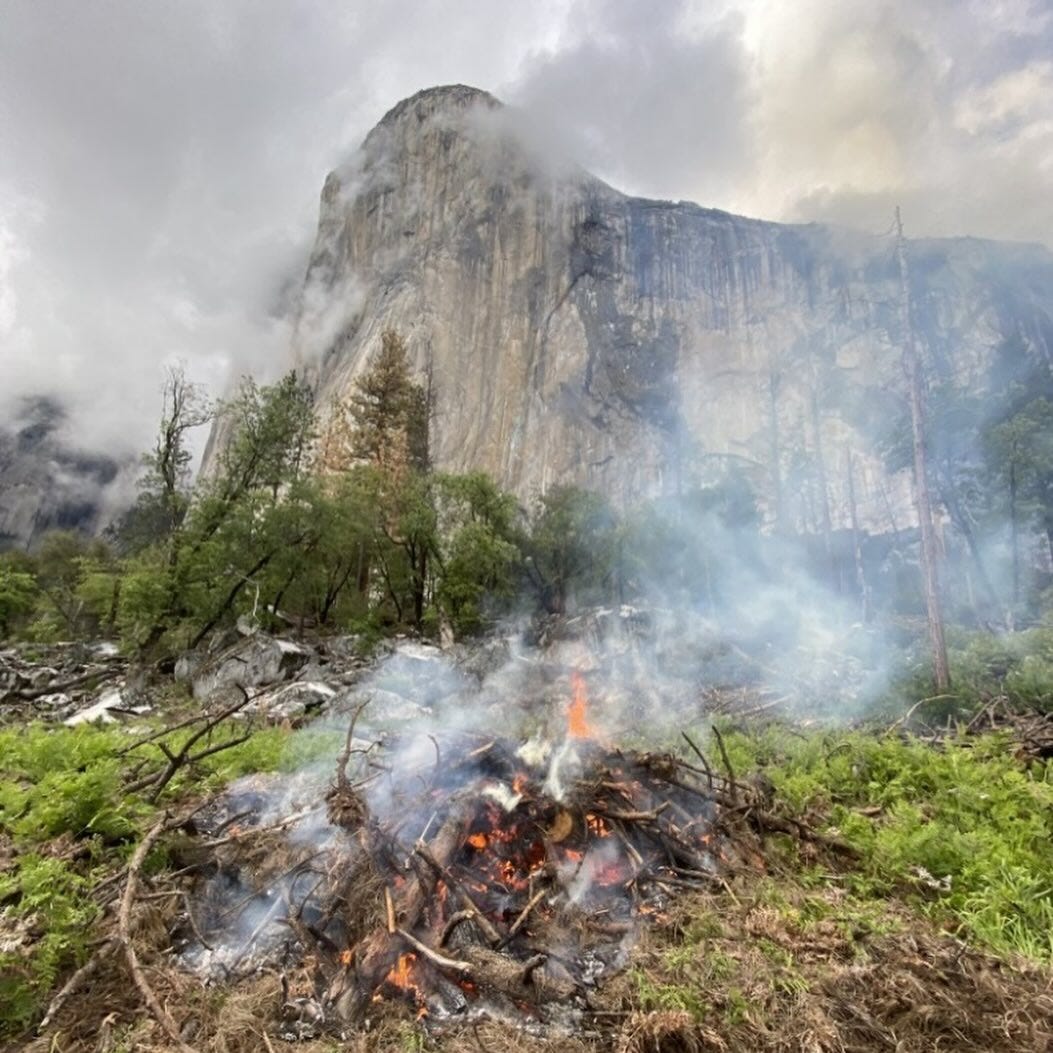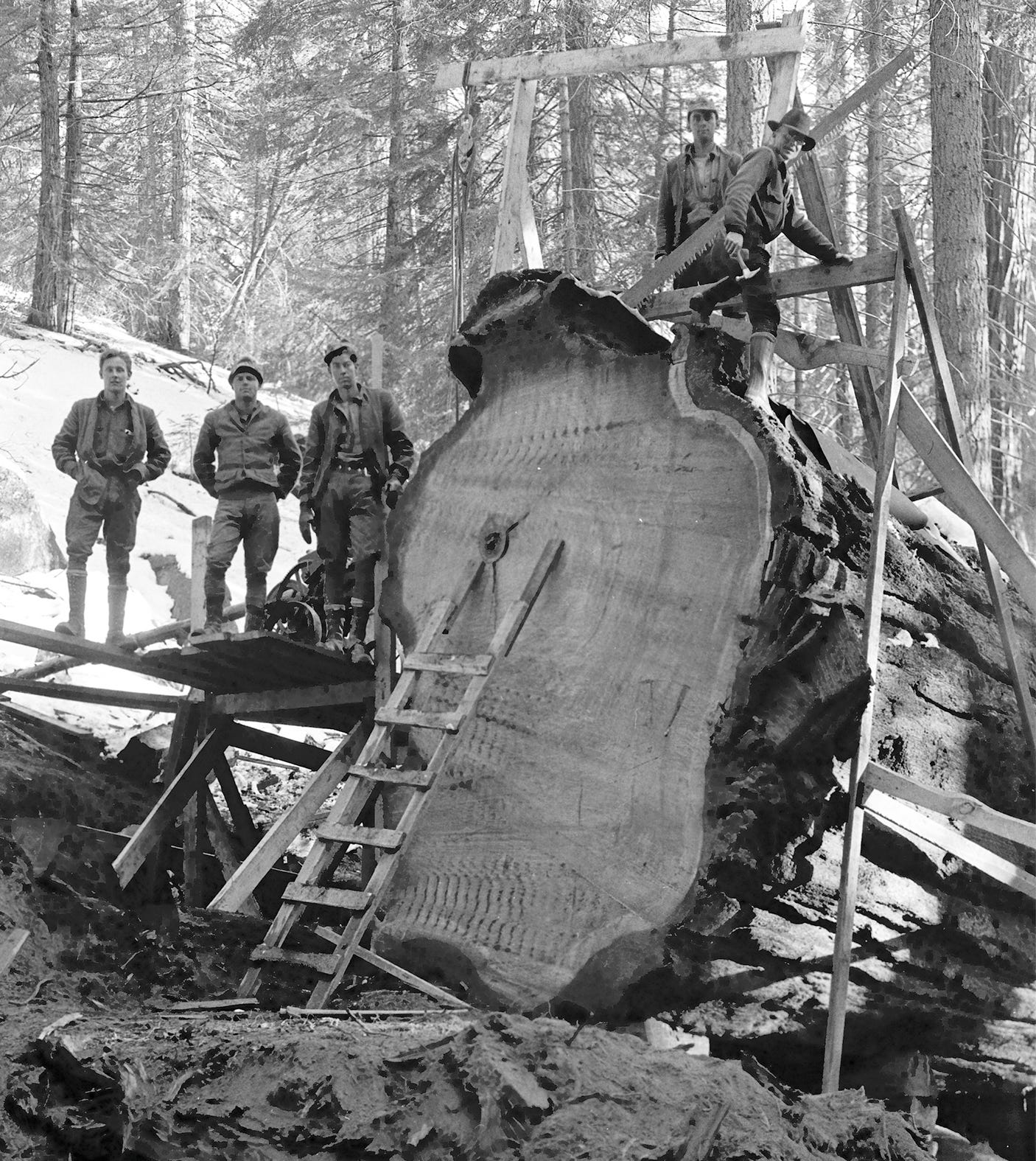Volume 2, Number 16 - Monday, Oct. 2, 2023
Published twice a week, on Monday and Thursday

Perspective
COOLER WEATHER means many things in the Sierra Nevada, but among them is that land managers will fire up. From continued management of lightning-caused fires earlier in the year to pile-burning and prescribed fire, burning will continue until weather conditions change or, in some cases, restrictions related to threatened or endangered species must be factored into burning plans.
As reported by Sequoia National Forest on Facebook, the Western Divide Ranger District began prescribed burning on Tuesday, Sept. 26, at Long Meadow Grove.
Here’s what the report said:
In addition to Long Meadow Grove, prescribed burning will occur in recreation sites needing tree mitigation work, such as the Trail of 100 Giants, Western Divide Highway (Mtn. 107), and Redwood Campground. Crews will remain on-site to monitor conditions and manage any potential risks.
There are many benefits associated with prescribed burning. The burns consume material on the ground, open space for regeneration, and return nutrients to the soil, which supports regeneration. Prescribed burns also help protect communities by reducing fuel loads and fuel continuity around the community, lowering the risk of a high-severity wildfire.
Most of the project areas consist of scattered piles of small trees, brush, and limbs created from efforts related to Giant Sequoia Emergency Response. The acreage burned each day will vary based on weather, fuels conditions, and availability of personnel.
A view of WatchDuty shows a number of prescribed burns in the Sierra — they show up as little green flames with “Rx” on them. You can click through to read more about each. See the wildfire update below for the latest on the management of the Redwood and Quarry lightning-caused fires.
Thoughts about Dianne Feinstein
Somewhere, in one of the boxes I have carted around for years, I have photos I took of Sen. Dianne Feinstein during a visit to Giant Sequoia National Monument.
I can’t remember the exact year, but it was in the early 2000s, and the meeting place was near Camp Nelson, perhaps at Coy Flat campground. Before the visit, she reportedly made a statement that the negative impact on the regional economy related to forest land use restrictions would be offset by increased visitation. (That could be a topic for another day, but let’s just say that two decades later, that has not been the case.)
The senator supported the creation of the national monument by President Bill Clinton on April 15, 2000. Locally, the new monument was supported by some, but it was generally unpopular.
I was told that the senator had not previously seen giant sequoia trees in person before her visit to the monument. She held a giant sequoia cone in her hand and marveled, as we all do, that such magnificent trees could grow from such small cones.
In September 2022, Senators Feinstein and Alex Padilla introduced the Senate version of the Save Our Sequoias Act. It was a companion to the House version of the bill and differed in a number of respects. I compared the first House version with the Senate version HERE. Neither bill progressed, and only a House version was introduced this year.
The current SOS Act, reintroduced as HR 2989 in late April by a bipartisan coalition including Speaker of the House Kevin McCarthy, has no companion in the Senate.
I’ve reported here previously that the Save Our Sequoia Act has found support from some environmental organizations, including Save the Redwoods League and The Nature Conservancy. But others, including the Sierra Club and Sequoia ForestKeeper, oppose the bill.
‘Complicated environmental record’
As reporter Jake Bittle wrote for Grist a few days ago, Senator Feinstein had “a complicated environmental record.”
Here are a few excerpts from his article:
Feinstein represented California as a Democrat in the U.S. Senate for more than 30 years, becoming the longest-serving woman in Senate history, and during that time she brokered a number of significant deals to protect and restore the natural landscapes of the West. In recent years, as politics shifted, she found herself on the receiving end of criticism over her approach to tackling the climate crisis.
She worked to pass legislation that would protect millions of acres of California wilderness from development and extractive industry, using her deft skills as a negotiator to bridge disputes between competing interests. She succeeded in that conservation effort where her predecessors had failed, spearheading a 1994 bill that created the Death Valley and Joshua Tree national parks, which encompass millions of acres. She later passed bills to protect Lake Tahoe, the California redwoods, and the Mojave Desert.
And, in my opinion, the most important statement in the article…
Even so, as a compromise-oriented legislator from California, she often had to weigh the competing interests of farmers, ranchers, and environmentalists, and at times she angered all of them.
It was clear to me, as I read reports over the past year of Feinstein’s failing health — and then of her death on Sept. 29 — that we probably won’t end up with a “compromise-oriented legislator from California” anytime soon. And that’s too bad.
Wildfire, water & weather update
Pretty nice weather continuing. The best Sierra Nevada weather forecasts can be found at NWS Hanford, HERE, and NWS Sacramento, HERE.
Wildfire update: The Redwood Fire in Sequoia National Park — at 1,957 acres on Sept. 30 — and the Quarry Fire on Stanislaus National Forest — at 5,557 acres this morning — continue to be the only two large wildfires burning in Central California. I write this with a bit of wonder because fires of such a relatively small size are rather remarkable compared to the millions of acres burned in recent years. The chart below is from a year ago, so it doesn’t include 2022, but that year was also relatively quiet, with approximately 132,000 acres burned, compared with the record-breaking 2020 and 2021 fire seasons, which burned 1.1 million and 1.6 million acres in the Sierra, respectively, according to the Sierra Nevada Conservancy.
Did you know you can comment here?
It’s easy to comment on items in this newsletter. Just scroll down, and you’ll find a comment box. You’re invited to join the conversation!
Giant sequoias in the news
• This topic deserves more time and attention, but I’ll share a link now to a story published by The Washington Post yesterday with the headline, “Large trees fueled massive Calif. wildfire that killed giant sequoias.” You can read it HERE (gift link), and I’ll write more about the study it’s based upon in an upcoming edition. The comments are also fascinating — what a range of opinion!
• Marek Warszawski wrote about giant sequoias in an opinion piece published in The Fresno Bee on Sept. 29. Read it HERE, or an excerpt:
The idea that human beings could plant trees that grow more than 300 feet tall and live for 3,000 years sounds far fetched. Nature does that sorta stuff, not us. Unfortunately, things have reached a point where we have to try, at least in a handful of severely damaged giant sequoia groves while employing the smartest and simplest methods. Even if doing so requires a little trammeling in wilderness areas.
• A Fresno Bee video by Craig Kohlruss published the same day provides more background on Sequoia and Kings Canyon National Parks’ plans to replant (opposed by some environmental groups, as I have previously reported). Watch the video HERE.
• The Guardian published a fascinating article and photos on Sept. 30 about Charlie Castro, a tree-climber and member of the Mono Paiute and Miwuk tribes, who was part of the last generation born of his family and raised in Yosemite National Park. Castro, 89, now lives in Three Rivers, according to the article, and I recommend you take the time to read the story HERE.
• TechnoTrenz has a nice piece about the Oct. 1 anniversary of Yosemite National Park HERE.
Historic photo of the week

Thanks for reading!





Without delving into politics too much - I agree in that Feinstein worked to be a "compromise-oriented legislator." Obviously, no one is going to make everyone happy, but it is something we are in dire need of for so many things these days, and in just how to protect nature and our trees is one of those things.
“Our analysis is consistent with past work showing that cessation of Indigenous burning practices and implementation of fire suppression in the Sierra Nevada mountains are important contributors to recent increases in fire intensity. “. From the study cited in the Washington Post. Another study by Daniel Swain and others indicates the vapor pressure deficit (a measure of dryness of fuel) during the KNP Complex fire was by far the highest ever recorded in the fire area. Some days during the fire reached record high temperatures. The Post headline is a little misleading in that the smoke measurements showed excess particles from “bomb carbon”, those trees and debris that were alive during atomic bomb testing, and would date from that time period, not necessarily “large” trees.